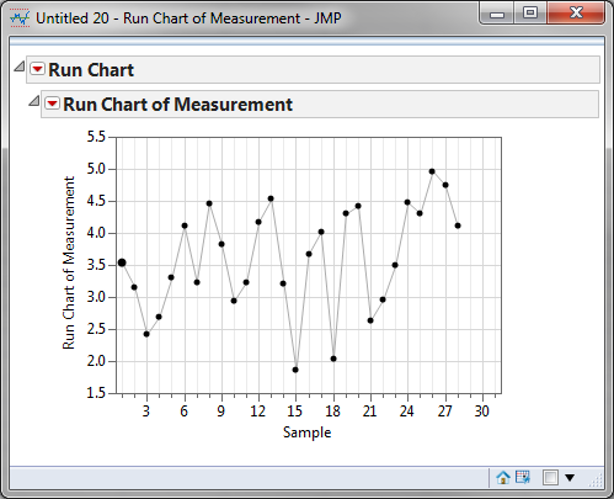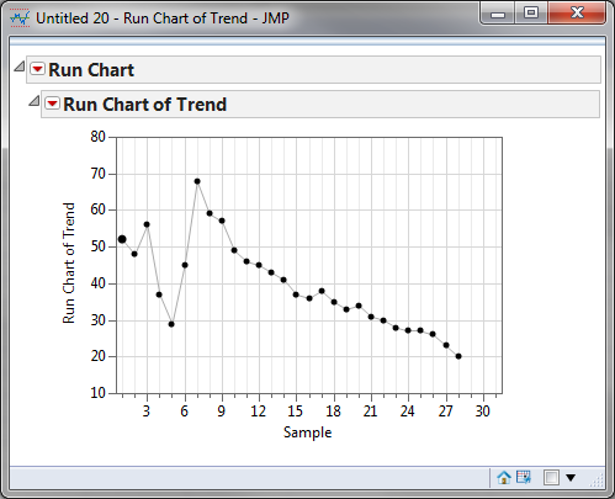Run Chart with JMP
What is a Run Chart?
A run chart is a chart used to present data in time order. Run charts capture process performance over time. The X axis of a run chart indicates time and the Y axis shows the observed values. A run chart is similar to a scatter plot in that it shows the relationship between X and Y. Run charts differ however because they shows how the Y variable changes with an X variable of time.
Run charts look similar to control charts except that run charts do not have control limits and they are much easier to produce than a control chart. A run chart is often used to identify anomalies in the data and discover pattern over time. They help to identify trends, cycles, seasonality and other anomalies.
How to Plot a Run Chart in JMP
Data File: “RunChart.jmp”
Steps to plot a run chart in JMP:
- Click > Analyze -> Quality & Process -> Control Chart -> Run Chart
- Select “Measurement” as the “Process”

- Click “OK”

The figure above is a run chart created with JMP. The time series displayed by this chart appears stable. There are no extreme outliers, no visible trending, or seasonal patterns. The data points seem to vary randomly over time.
Now, let us take a look at another example that may give us a different perspective. We will create another run chart using the data listed in the column labeled “Cycle”. This column is in the same file used to generate Figure 2.39. Follow the steps used for the first run chart and instead of using “Measurement” use “Cycle” in the Run Chart dialog box.

In this example, the data points are clearly exhibiting a pattern. It could be seasonal, or it could be something cyclical. Imagine that the data points are taken monthly, and this is a process performing over a period of 2.5 years. Perhaps the data points represent the number of customers buying new homes. The home-buying market peaks in the summer months and dies down in the winter. Using the same data tab, let us create a final run chart. This time, use the “Trend” data. Again, follow the steps outlined previously to generate a run chart.

In this example, the process starts randomly, but after the seventh data point, almost every data point has a lower value than the one before it. This clearly illustrates a downward trend. What might this represent? Perhaps a process winding down? Product sales at the end of a product’s life cycle? Defects decreasing after introducing a process improvement?
Model summary: It should be clear through our review of Histograms, Scatterplots, and Run Charts, that there is great value in “visualizing” the data. Graphical displays of data can be very telling and offer excellent information.

